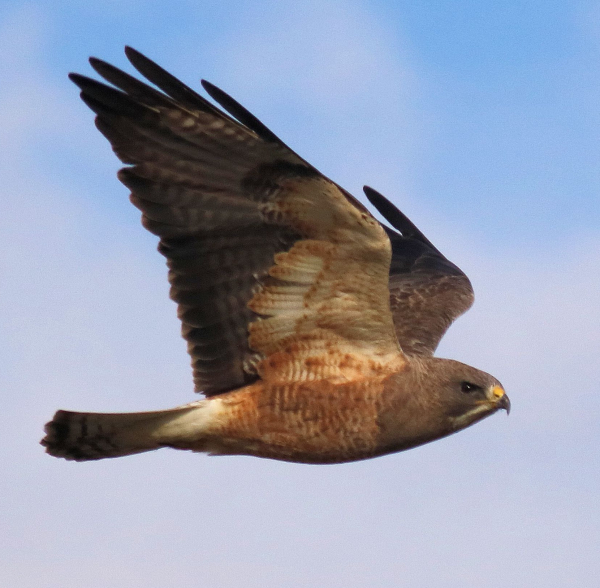
It’s a great time to get into the swing of monitoring bird migration websites to understand how the season is progressing overall, and daily (Swainson’s Hawk photo by Paul Konrad).
|
As spring migration progresses through April and May, be sure to take advantage of the kinds of birding resources that enhance our spring birding experiences and help us to better understand the surges and pauses in migration flights of birds. Using such novel advancements as enhanced weather radar as well as good ole-fashioned counts of birds as they fly by count stations, birders can learn more about the exciting period of spring migration we have entered. By referring to the BirdCast and HawkCount websites regularly you will experience a more continental understanding of birds and bird migration.
BirdCast is actually a 4-part migration monitoring system that provides real-time migration information as illustrated on weather radar in Live Bird Migration Maps. There is also a wealth of information updated for each night flight on the Migration Dashboard. Provided by the Cornell Lab of Ornithology, the 4 BirdCast websites are all insightful, and you can review them at:
Live bird migration maps - BirdCast
Bird migration forecast maps - BirdCast
Migration Dashboard - BirdCast
Local bird migration alerts - BirdCast
Another exciting migration website to monitor periodically is HawkCount, where you can check on the advance of birds of prey from Colombia to Canada by monitoring spring raptor counting sites. Local numbers of raptors counted also indicate prime migration days, and it’s interesting to check on the numbers of different species and how totals change week to week, month to month. It’s easiest to check species totals during a given month by clicking on the name of the raptor counting site you are interested in, then on the count site’s webpage you can click on the “Monthly” button on the left side of the webpage to get a broader overview of how raptor number change during a given month.
Some raptor count sites keep counts of All Birds observed daily throughout the spring season, such at the West Skyline Hawk Count in Duluth, Minnesota. These birds are listed on the right side of the webpage in the heading “Non-Raptor Notes;” for example, see HawkCount. Overall, migration is still in the early stages across much of the United States, but the first Baltimore Oriole was sighted at a hawkwatch in southern Texas on Monday, so migration will surely heat up as the month progresses. Enjoy keeping up to date on the variety and numbers of birds moving across the continent as the spring migration season progresses.